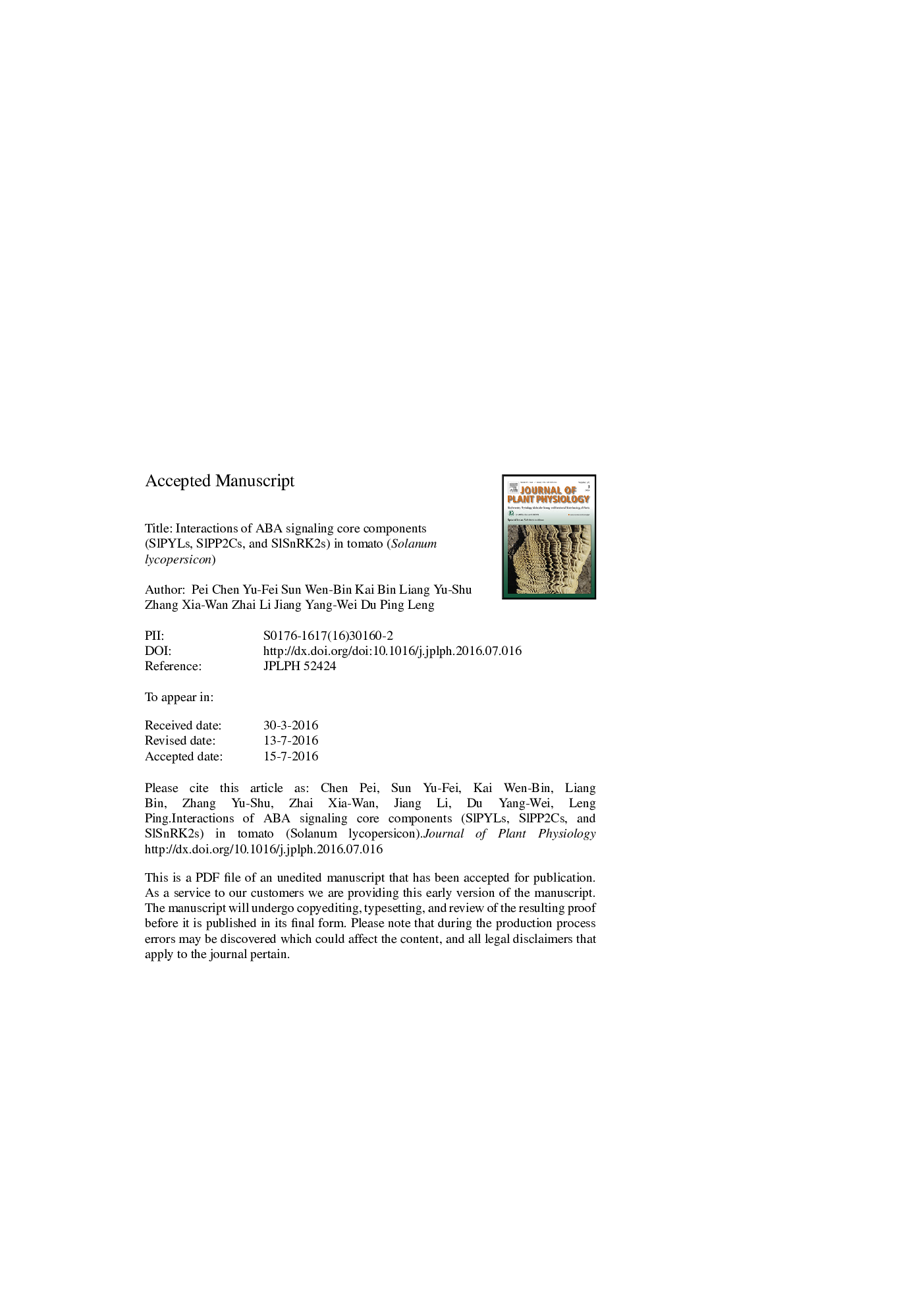| Article ID | Journal | Published Year | Pages | File Type |
|---|---|---|---|---|
| 8387110 | Journal of Plant Physiology | 2016 | 37 Pages |
Abstract
Abscisic acid (ABA) regulates fruit development and ripening via its signaling. However, the exact role of ABA signaling core components in fruit have not yet been clarified. In this study, we investigated the potential interactions of tomato (Solanum lycopersicon) ABA signaling core components using yeast two-hybrid analysis, with or without ABA at different concentrations. The results showed that among 12 PYR/PYL/RCAR ABA receptors (SlPYLs), SlPYL1, SlPYL2, SlPYL4, SlPYL5, SlPYL 7, SlPYL8, SlPYL9, SlPYL10, SlPYL11, and SlPYL13 were ABA-dependent receptors, while SlPYL3 and SlPYL12 were ABA-independent receptors. Among five SlPP2Cs (type 2C protein phosphatases) and seven SlSnRK2s (subfamily 2 of SNF1-related kinases), all SlSnRK2s could interact with SlPP2C2, while SlSnRK2.8 also interacted with SlPP2C3. SlSnRK2.5 could interact with SlABF2/4 (ABA-responsive element binding factors). Expressions of SlPYL1, SlPYL2, SlPYL8, and SlPYL10 were upregulated under exogenous ABA but downregulated under nordihydroguaiaretic acid (NDGA) at the mature green stage of fruit ripening. The expressions of SlPP2C1, SlPP2C2, SlPP2C3, and SlPP2C5 were upregulated in ABA-treated fruit, but downregulated in NDGA-treated fruit at the mature green stage. The expressions of SlSnRK2.4, SlSnRK2.5, SlSnRK2.6, and SlSnRK2.7 were upregulated by ABA, but downregulated by NDGA. However, SlSnRK2.2 was down regulated by ABA. Expression of SlABF2/3/4 was enhanced by ABA but decreased by NDGA. Based on these results, we concluded that the majority of ABA receptor PYLs interact with SlPP2Cs in an ABA-dependent manner. SlPP2C2 and SlPP2C3 can interact with SlSnRK2s. SlSnRK2.5 could interact with SlABF2/4. Most ABA signaling core components respond to exogenous ABA.
Keywords
Related Topics
Life Sciences
Agricultural and Biological Sciences
Agronomy and Crop Science
Authors
Pei Chen, Yu-Fei Sun, Wen-Bin Kai, Bin Liang, Yu-Shu Zhang, Xia-Wan Zhai, Li Jiang, Yang-Wei Du, Ping Leng,
